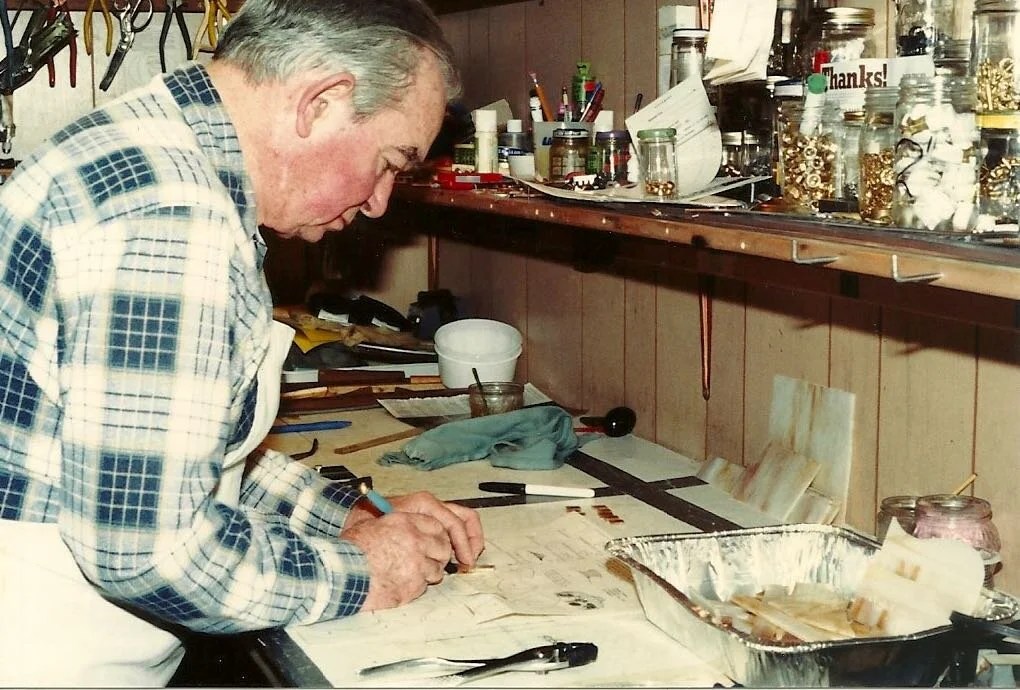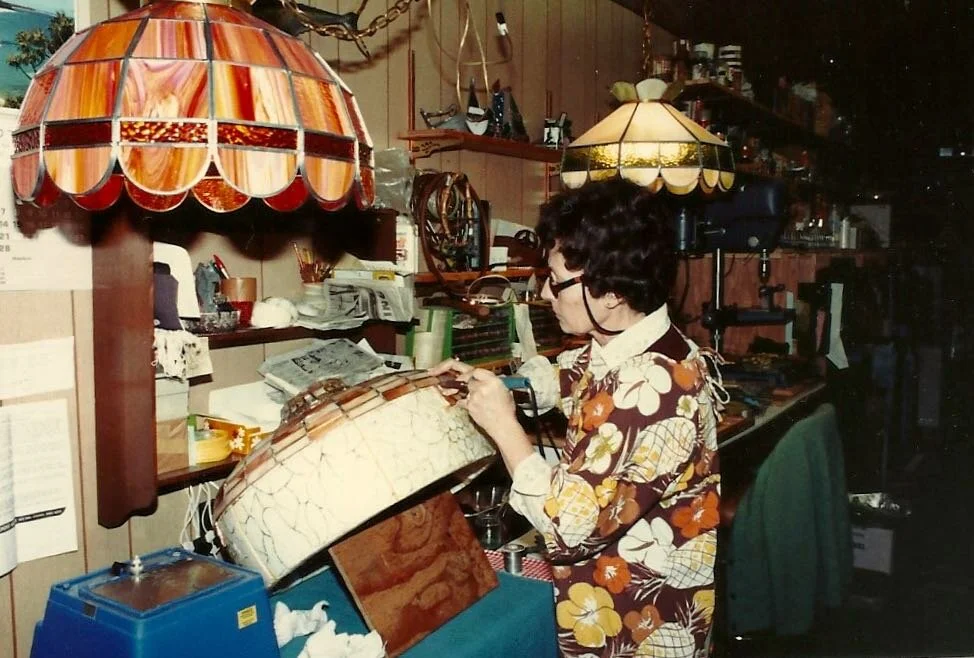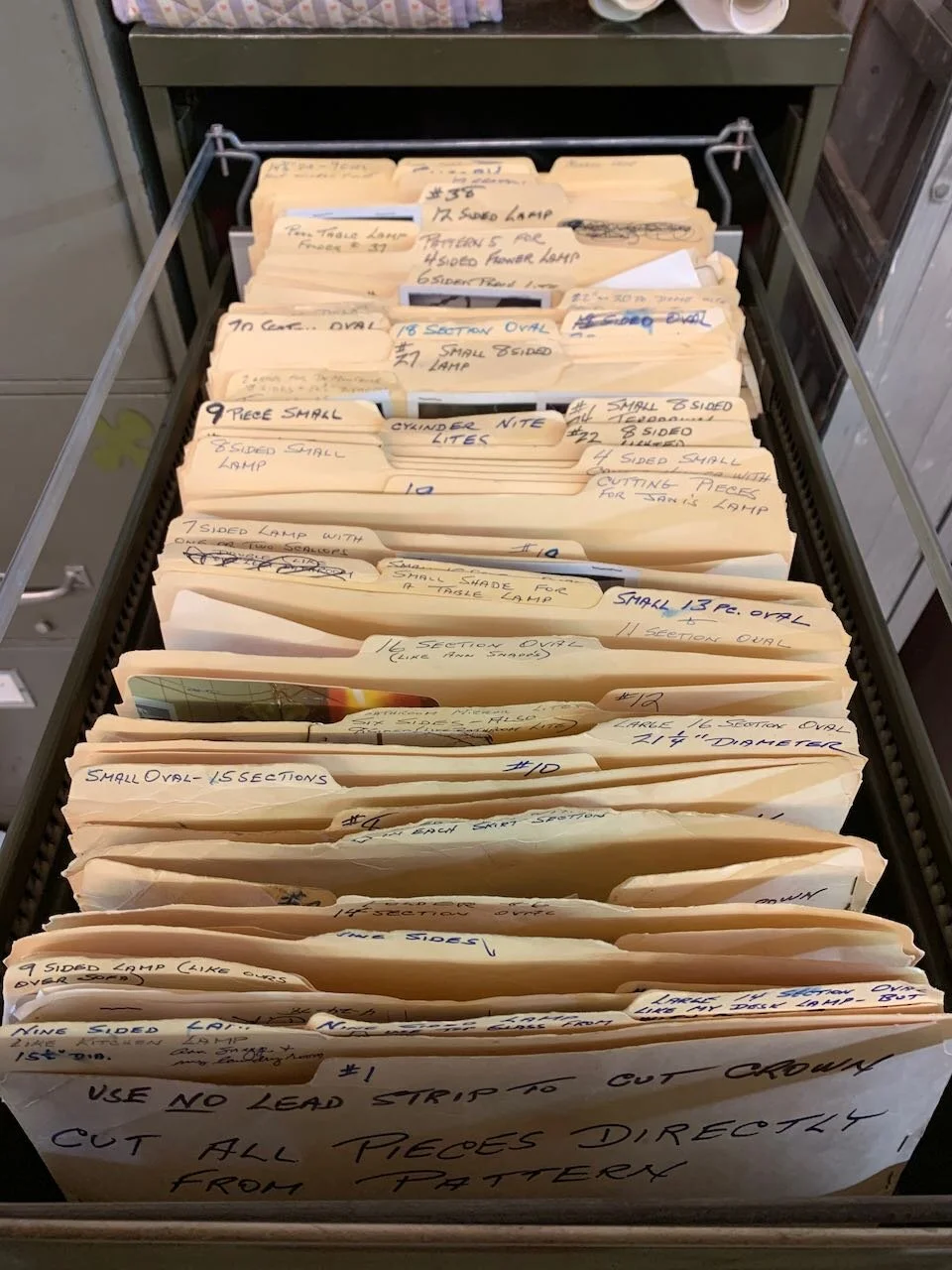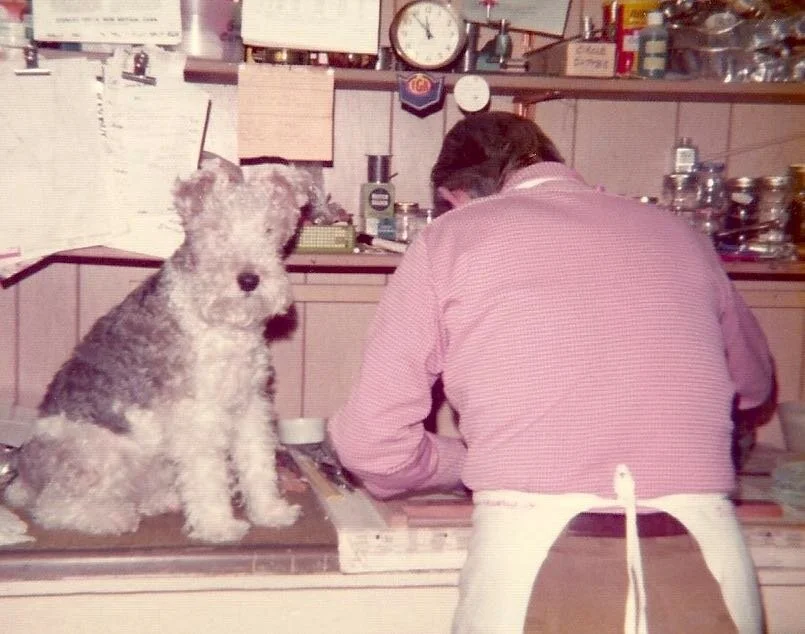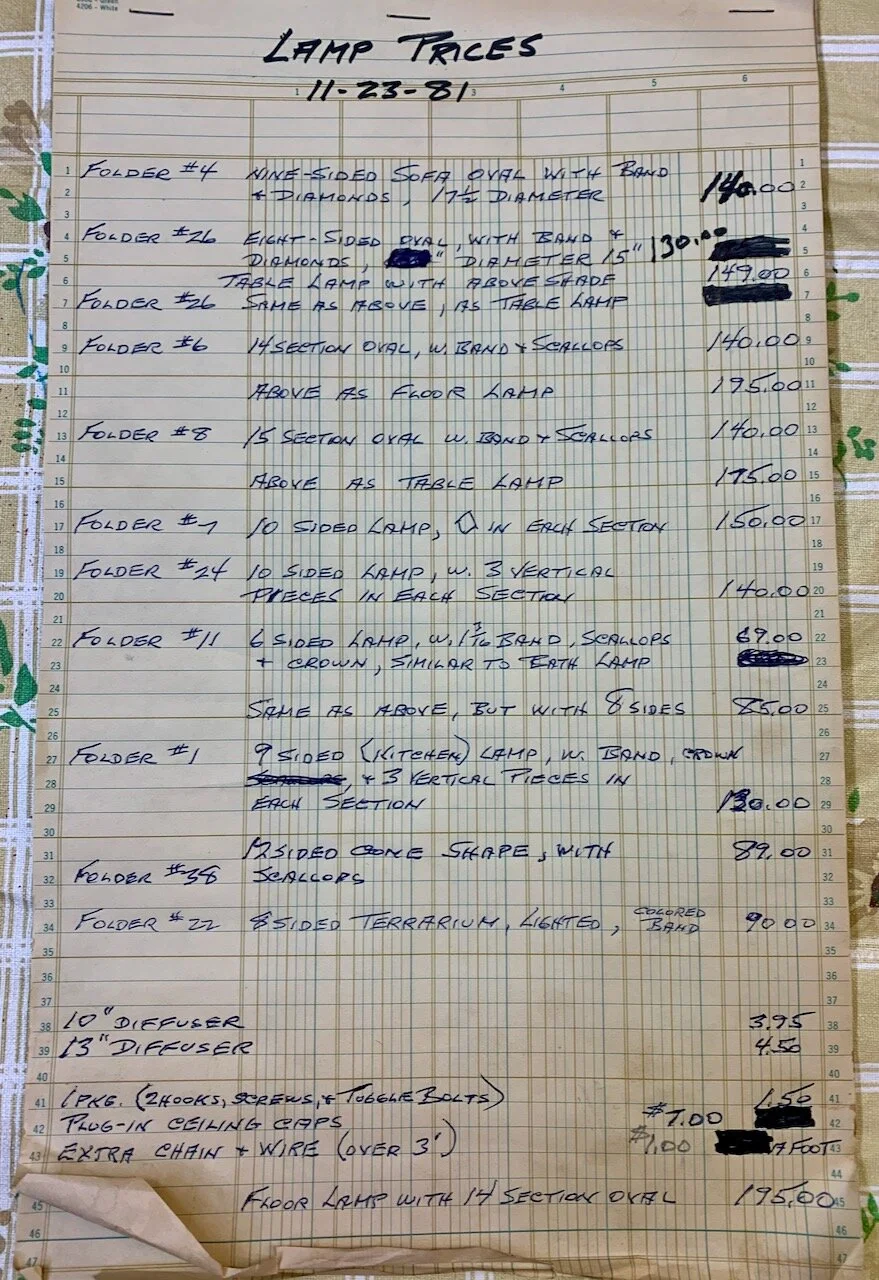In 1968, Betty Spieth opened a crafts catalog and ordered a leaded glass lamp kit for her husband Charlie. After assembling the kit, Charlie took note of some problems with the design. It had bulky lines, weak structure, and light shining through the seams. The lamp simply wasn’t up-to-snuff.
Three years later, a molotov cocktail was thrown through the front window of Spieth’s Market, severely damaging the grocery store, a business he had owned since 1940. The apartment above the store, where Betty & ‘Chas’ lived, was no longer habitable. A temporary house had to be built out of a small detached garage at the back of the property, and with limited cash to set up their new home, Charlie decided to make his own lamps for the house.
Charlie set up a lamp making workshop - glass and small parts storage had to be built, tools acquired, and, most importantly, lamps designed to a suitable standard of quality. He drew more than 40 designs, in all, and build many more variations on those patterns. After considerable trial and error, and some nearly devastating feedback from Betty on the size, shape, and angles of the early designs… a few lamps passed the litmus test. Charlie was an entrepreneur and a successful businessman, and even his lamp making hobby turned into a one man assembly line. My research so far suggests that he built around 300 lamps over his most productive years in the mid 1970’s to early 1980’s.
This site will attempt to document all 40+ of Charlie’s unique leaded glass lamp designs and assembly methods. It will serve as a repository for photos, an inventory of lamps that still exist from the hundreds built, and a time capsule for a special kind of craftsmanship that is widely appreciated but so rarely found.
Charlie Spieth - cutting glass at his workbench
Betty Spieth - Adding solder to copper foil on a form-built "Fruit Lamp"
Documentation and patterns for all of Charlie's lamp designs
A little help from a friend
